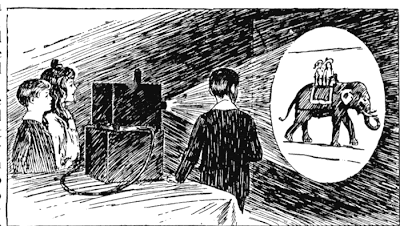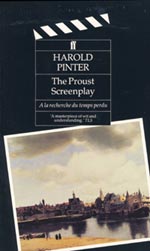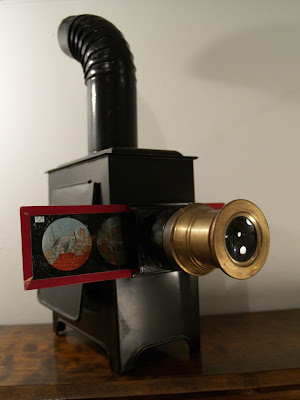

 字體:小 中 大
字體:小 中 大 |
|
|
|
| 2010/11/23 18:48:32瀏覽371|回應0|推薦0 | |
有人希望小說是事物的一種電影式的展示, 這種觀點是荒謬的, 再也沒有比這樣的電影式的視界更會遠離我們所感知的現實了。", "所謂的現實正是同時圍繞著我們的那些感覺和回憶間的某種關係 -- 一個普通的電影式影像便能摧毀的關係, 電影影像自稱不超越真實, 實際上它正因而離真實更遠。(VII) 乍看來, 普氏心裡對電影的評價並不高, 顯然也不認為電影是藝術的一種, 但是自1895年來, 電影技術以及觀念的翻新, 以經使其不僅跨入藝術之門, 更提供文字之外特別的聲光色效應, 弔詭的是, 此一效應恰恰使普氏風格的意識流小說某方面得到絕佳的詮釋與發揮。此外, 普氏童年喜好的投影燈, 也是類似於電影的視覺享受....  此點他的好友Jean Cocteau在他的自傳式散文書《存在之難》中再度討論, 作為當時所有藝術型式最年輕的一環, Cocteau對電影未來能傳達的訊息寄以厚望, 當然他自己也拍過好幾部電影, 嘗試尋找答案. 而今看來Proust 對文字與傳統藝術的偏愛與摯愛, 恐怕是阻礙他對電影的判斷力的緣故罷!? 保羅古德曼Paul Goodman在其1935年所著 " 普氏攝影眼"The Proustian Camera Eye 一文, 曾分析有四大原因, 使讀者與普氏心靈相通, 因而使追憶逝水年華適合拍成好片( 當然, 也有許多普迷認為是不可能拍好的) : 1. the free association and flow of film 影片能夠表現自由聯想與意識流 2. the camera's ability to trace an idee fixe 鏡頭能夠留下固定主題(主導動機)的線索 3. film's ability to clarify and to dramatize through juxtaposition 影片能夠利用並置手法釐清與戲劇化其內容 4. the similarity between the camera and the "I" of Proust's work, both of them observers, not participants 。鏡頭之身分類似追憶中的敘述者, 往往是旁觀者而不加入畫面中   "idee fixe" -- 固定樂思, 固定樂想, 固定樂念。這是白遼士 對音樂最重要的貢獻,其幻想交響曲(Symphonic Fantastique)中把最重要的主題標示為「固定樂想」並加以發展,以各種變形貫穿作品,以表達"困擾男性的愛情或其形像"。近似於固定樂想的是,其後華格納在著名的樂劇四部曲「尼伯龍的指環」(Der Ring des Nibelungen,1851-74)之中,開始大量使用"主導動機"(leitmotif),他不只用於某種意念,也寓指各類角色及他們高尚或卑劣的情感,物品,與事件。 在電影預言中,"idee fixe"可指那些反覆出現的執念影像。 [Editor's Note: The following article originally appeared in The New Republic in 1977 and was included in Stanley Kauffmann's criticism collection Before My Eyes in 1980. We reprint it now, with Kauffmann's permission, on the occasion of Harold Pinter's receipt of the 2005 Nobel Prize in Literature, hoping that it will draw new attention to Pinter's extraordinary screenplay. In 2000, a stage adaptation of the Proust screenplay, done by Pinter and Di Trevis, was directed by Trevis at the Royal National Theatre in London. The critic Charles McNulty referred to it then as "the greatest film never made."] Excuse a personal note – it's relevant. Early in 1974 Harold Pinter, whom I know slightly, read a historical anthology called American Film Criticism which I had edited (with the help of Bruce Henstell). Pinter wrote me about the book, saying that he had been particularly struck by Paul Goodman's essay "The Proustian Camera Eye," written in 1935. Pinter said he was sending me a copy of his Proust screenplay, which was the first I heard of it, asked me to read it, then forward it to Goodman. I read it, wrote Pinter about it, and said I couldn't forward it because Goodman was dead. Might I keep the script? Pinter had said that expense was clouding production of the film, and I wanted to have at least this much of it. He replied that I could keep it, that there was still no money to make the picture, and that for various reasons he couldn't even publish the script. The film has not been made, but at least the screenplay is now published. I speak carefully when I say that it's incomparably the best screen adaptation ever made of a great work and that it is in itself a work of genius – minor compared with the source, as Pinter surely would be the first to scornfully insist, but I would insist that this screenplay far surpasses anything conveyed by the term "adaptation" and becomes a recomposition in another art. This is by far the best of his screenwriting and not just because it comes from a titanic novel: look at most screenplays from great novels. Pinter has touched genius in some of his plays; here, touched by a giant genius, he rises in the film form, technically and imaginatively, to the level of his best theater work. |
|
| ( 知識學習|其他 ) |










